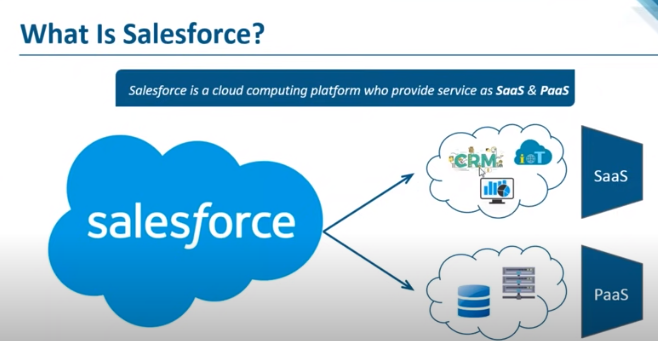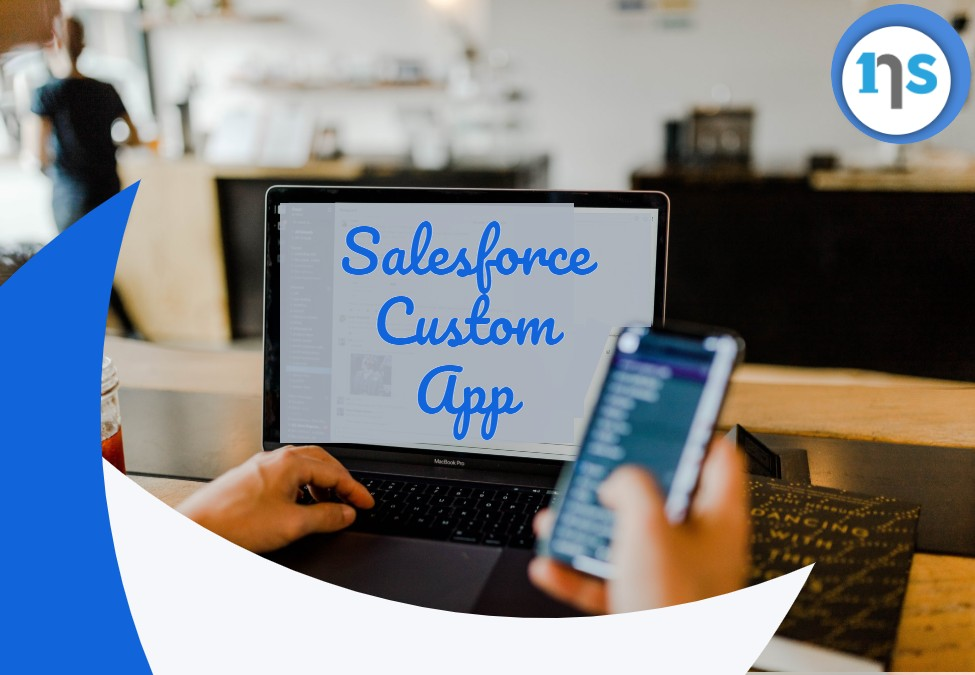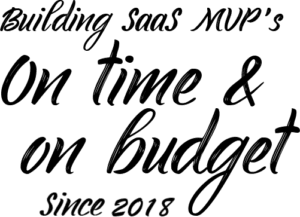There is a surging demand for dependable software applications and programs in the current connected digital realm. More than 70% of consumers in the business industry, for example, say receiving customer support and product details through their smart gadgets is crucial.
Besides connecting with customers directly, players in the business sector are learning that the Salesforce custom app can extend hardware and software efficiency through custom mobile or web application development. Are you considering building apps tutorials in Salesforce? This article will offer the guidance you need to succeed in the process.
What is a Custom App in Salesforce?

A custom application is a collection of objects or tabs that work together to solve a specific business need. Entrepreneurs or third-party developers can create apps distributed securely and privately to clients. There are various reasons why you should choose a Salesforce application instead of purchasing one on AppExchange, as we shall see below.
Cost-Effectiveness
Building a JavaScript-based custom app on Salesforce is ideal if you are on a strict budget. Many AppExchange apps attract monthly subscription fees, and the number of users determines the total amount. However, when it comes to custom application development, you only make a one-off payment to cover the development, analysis, and deployment. The number of potential application users does not determine the total amount of money you make.
Custom Apps Cover Complex and Distinct Business Processes
Creating a custom application to accommodate all your business needs is ideal. It allows you to illustrate industry-specific procedures in your Salesforce CRM solution, such as various financial and insurance claims management institutions. AppExchange apps, on the other hand, facilitate the inclusion of universal functionality.
Merging Niche Software Products with Salesforce
You may require a custom integration application to execute a particular integration, such as linking your online platform to the Salesforce trailhead solution to create marketing components and access them from Salesforce. AppExchange has various ready-to-use integration applications to connect your Salesforce solution to extensively used third-party structures such as Microsoft Outlook or SharePoint DMS.
Customizing an App Further
Choosing a custom salesforce app allows you the freedom to modify your app in the future for various reasons, like business process changes or an increase in the number of users. AppExchange app offers no modification guarantee.
Are you looking for a specially designed, cost-effective, and highly customizable app for your business? Acquiring it via custom Salesforce app development would be the right choice. To invest wisely and gain value, consider the complexity of your business process and specific industry roles the app will execute.
How do I create a Custom App in Salesforce?
Before your development team starts building a custom app, they should be conversant with the optional requirements for your users. Here are some steps they should follow.
Establish Your Ideal User
Who is your target audience? Building individual personas helps you determine who your users will be, how often they will interact with the app, and the features they will need. With this information at hand, you can develop comprehensive profiles of your users and understand their preferred Salesforce admin functions.
Leverage Your Ideas to Create a Prototype
Build an interdependent prototype for testing purposes. RAD (rapid application development) checkbox methodology is an ideal method of giving users quick and consistent and quick feedback over continued planning while allowing you to make the necessary changes. Be sure to test new features and certify user experience before embarking on the next launch stage.
Develop an MVP (Minimum Viable Product)
Before launching the MVP, release it to your users for testing. Doing so helps you get feedback from real-world applications. By giving your users advanced updates with new compatible technologies, continuous delivery, and encryption to protect their data, you’ll remain compliant and keen on personal privacy.
- Ensure Your Application Stands out
You can have the latest features and updates, but users will move to your competitors if your application has nothing unique. Ensure users can access the latest features and updates regardless of their operating system, and monitor sign-in functionalities to eliminate bugs and speed up the QA (Quality Assurance) process.
Choose Between Mobile and Web Application
One of the popular misconceptions today is that web and mobile apps can be interchanged. Knowing the type of application, you’re building will help you determine the design, UX, app development software you will use, and the deployment.
Mobile applications are restricted to mobile devices. However, they can access internal resources such as photos, GPS, and contacts. They are also faster and can operate offline. Web applications, on the other hand, work as any browser.
Users don’t have to download or install them on their computers. They can also function on your mobile device with ease. While mobile and web apps can be custom applications, you need to determine your target audience’s preference.
Designing the Salesforce Custom App Architecture
Designing the architecture for a custom app in Salesforce requires careful planning and consideration of various factors. A well-designed architecture sets the foundation for a scalable, maintainable, and efficient application. Here are some key aspects to consider when designing the Salesforce custom app architecture:
Define the App’s Purpose: Start by clearly defining the purpose and objectives of your custom app. Understand the specific requirements, functionality, and user experience goals. This clarity will guide your architectural decisions throughout the design process.
Identify Data Model and Objects: Identify the data model required to support your app. Define the custom objects, fields, and relationships necessary to store and manipulate data effectively. Consider the relationship between your app’s data and standard Salesforce objects to ensure a seamless integration.
Choose Appropriate Development Approach: Salesforce provides several development approaches, including declarative development (point-and-click configuration) and programmatic development (coding with Apex and Visualforce). Evaluate the complexity and requirements of your custom app to determine the most suitable approach. In many cases, a combination of declarative and programmatic development provides the best outcome.
Define Security and Access Controls: Determine the security and access requirements for your custom app. Identify the roles and profiles that need access to specific data and functionality. Leverage Salesforce’s security features such as object-level and field-level security, sharing rules, and permission sets to enforce data security and access controls.
Consider Scalability and Performance: Design your app architecture with scalability and performance in mind. Consider factors such as data volume, user load, and integration with external systems. Utilize Salesforce’s platform features like asynchronous processing, batch processing, and platform caches to optimize performance and handle large data volumes.
Plan Integration Points: Determine if your custom app needs to integrate with external systems or other Salesforce apps. Identify the integration points and select the appropriate integration methods, such as REST or SOAP APIs, Apex callouts, or Salesforce Connect. Ensure data synchronization, error handling, and security considerations are accounted for in the integration design.
Implement Error Handling and Logging: Build robust error handling and logging mechanisms into your app architecture. Define how errors will be captured, logged, and presented to users or administrators. Utilize Salesforce’s logging facilities, such as debug logs and custom logging frameworks, to assist with troubleshooting and maintenance.
Consider User Experience: Design an intuitive and user-friendly interface for your custom app. Leverage Salesforce’s Lightning framework and components to create a modern and responsive user experience. Consider usability best practices, such as consistent layouts, clear navigation, and contextual help, to enhance user adoption and satisfaction.
Plan for Testing and Quality Assurance: Develop a comprehensive testing strategy for your custom app. Define test scenarios, test data, and test cases to ensure the functionality and performance meet requirements. Leverage Salesforce’s testing frameworks, such as Apex unit tests and Lightning component testing, to automate testing and ensure code quality.
Implement Continuous Integration and Deployment: Establish a robust deployment process for your custom app. Leverage Salesforce’s source-driven development model and version control systems to enable continuous integration and deployment practices. Automate the build, test, and deployment processes to ensure reliable and consistent deployments.
Determine the Cost of Custom Application Development
Many factors can determine the cost of your application based on your final goal. These include development, testing, maintenance, functionality, and updating to advanced features for all operating systems.
Price points depend on various elements. Ensuring you have everything that users require is critical. Still, you don’t have to break the bank to have a user-friendly and functional application. Salesforce allows you to develop custom applications with prebuilt templates embed dashboards. And fast deployment.
- Building Salesforce Custom app
There are two types of Salesforce applications; Lightning and Classic. Lightning apps are built and managed in Lightning experience, while classic apps are developed and managed in Salesforce Classic. Developers can customize both types of applications to align with users’ needs. Classic applications are a collection of primary and custom tabs such as:
Standard objects like Home, Groups, the core Chatter feed, and People
- Visualforce tabs
- Custom objects
- Lightning component tabs
- Web tabs
- Canvas applications through visual force tabs
Lightning apps are a group of components that comprise the Classic applications list, Lightning page tabs, and the Sales Dialer. In Lightning apps, users can customize the application’s logo and the navigation bar color to improve its branding. You can also convert Classic apps to Lightning applications in Lightning Experience. However, you must manage the two app versions separately in different environments.
Salesforce offers standard applications like Sales and Service. You can build your on-demand application by placing components into new custom apps.
A custom application comprises a description, label, app name, and a list of items that usually includes tabs. You can also incorporate custom branding and logos on your custom apps.
Custom apps in Salesforce classic are listed under the Lighting Platform app menu. It is a dropdown list that appears at the top of each page. In the Salesforce mobile app and Lighting experience, you can get your available custom apps in the App Launcher. To view your available Salesforce apps in Lightning Experience, click View All.
Once you select an app, your screen will change to display the contents of the application. For example, suppose you move from one app that comprises Opportunities to another one that does not. The Opportunities component will disappear. Further, the application may reflect a different landing tab. Apps are linked with profiles, while profiles regulate the tabs you can view and hide the available applications.
Testing and Quality Assurance of the Salesforce Custom App
Testing and Quality Assurance (QA) play a crucial role in ensuring the reliability, functionality, and overall quality of a Salesforce custom app. By conducting thorough testing and implementing effective QA processes, you can identify and address any issues or defects before the app is deployed to production. Here are some key aspects to consider when testing and performing QA on a Salesforce custom app:
Requirements Analysis: Begin by thoroughly understanding the requirements of the custom app. This will help you define the scope of testing and ensure that all functional and non-functional requirements are met.
Test Planning: Develop a comprehensive test plan that outlines the testing approach, test objectives, test cases, and resources required. The plan should cover different types of testing, such as functional, integration, performance, security, and user acceptance testing (UAT).
Functional Testing: This type of testing ensures that the app functions as intended. Test all the features and functionalities of the custom app, verifying that it meets the specified requirements. Include positive and negative test cases to cover different scenarios.
Integration Testing: Validate the app’s integration with other systems and third-party applications. Test data synchronization, APIs, and any integrations with Salesforce’s standard features or external systems. Ensure that the custom app seamlessly interacts with other components of the Salesforce ecosystem.
Performance Testing: Evaluate the app’s performance under different loads and stress conditions. Measure response times, resource utilization, scalability, and stability to ensure the app can handle expected user volumes without performance degradation.
Security Testing: Verify the app’s security measures to protect sensitive data. Test for vulnerabilities, such as SQL injection, cross-site scripting (XSS), and insecure authentication/authorization. Ensure that access controls, data encryption, and user permissions are implemented correctly.
User Acceptance Testing (UAT): Involve end users or stakeholders in UAT to ensure the app meets their expectations. Gather feedback and address any usability issues. UAT helps validate that the custom app fulfills the business requirements and delivers the desired user experience.
Regression Testing: After making changes or fixing defects, perform regression testing to ensure that existing functionality remains unaffected. Test all previously tested features to detect any regressions or unintended side effects.
Automated Testing: Implement automated test scripts using tools like Selenium or Apex test classes. Automated tests improve efficiency, reliability, and repeatability of testing, especially for repetitive tasks and regression testing.
Continuous Monitoring: Establish monitoring mechanisms to track the app’s performance and user experience in real-time. Implement error tracking, logs, and analytics to identify and address any issues that arise post-deployment.
Documentation and Reporting: Maintain comprehensive documentation throughout the testing and QA process. Document test cases, test results, defects, and any recommendations or improvements. Generate regular reports to provide visibility into the quality assurance activities and outcomes.
How do I publish a Salesforce app?
Before publishing the application, you must finish off the safety review procedure. The process doesn’t end after passing the initial safety audit. You should follow security review guidelines at each development stage. Further, Salesforce demands regular safety analysis between six and two years after approval. Safety risks evolve every day, and you must conduct safety checks regularly to be on the safe side.
Every application version must undergo a safety review procedure. Developers should also analyze their products on Salesforce before presenting a safety review. Doing so increases the application’s chances of clearing the review process, explaining why AppExchange has become one of the most popular commercial app marketplaces.
Publishing Salesforce Custom All on AppExchange
- Link the packaging org to AppExchange
- Set provider profile or information
- Create listings for components or applications
- Submit components or applications for safety review
- Publish your list on AppExchange
Listing helps users determine how they can benefit from your component or app.
Here are things you need when creating a listing
- Description of your product
- Contact data
- Price
- Email notification management
- Free test drive or trial information
- Select license settings
- Listing categories
- Select installation options
- Set app payments
What are some examples of Custom Apps in Salesforce?
Whether you are a serial entrepreneur or a startup founder, creating a custom app on Salesforce can help boost your business. You can easily create your app on AppExchange and integrate it into the Salesforce platform. Salesforce is a fast-growing SaaS-oriented CRM with numerous apps on AppExchange.
To create an app, you should know that you can base on various essential categories like administration and IT, sales, marketing, and customer service. Devising new ideas can be a daunting task. Here are some ideas you can leverage to develop custom Salesforce apps.
Administration and IT apps
Some of the applications that fall under this category include:
- Automation Apps
Developing an automation app to execute routine and repetitive tasks is an organization’s best effort and time-saving solution. The app automates all redundant functions in the workflow, copying and transferring data for the users.
- You can incorporate support for including popularly used web applications like Gravity forms, Google Sheets, Gmail, Evernote, Wuffoo, and Mailchimp. Users can link Salesforce to the web applications regularly and automate everyday tasks.Recovery and Data Backup App
Companies managing a cloud-based customer relations management system want to protect their data at all costs. The Salesforce service level agreement does not cover data loss from malicious intent or user error. The official Salesforce system administrator help page recommends using AppExchange backup options.
A recovery and data backup app can be ideal in recovering, comparing, and replacing the Sales force.com user data. It can also facilitate daily automatic backups. Ensuring the app can restore metadata and data at all levels will be an added advantage. Further, your application should replicate dev orgs for anonymous data development, testing, user acceptance testing, and quality assurance.
Marketing Apps
Examples of marketing apps would be:
Mass Email and Email Marketing App
An email marketing application syncs contacts and data on the Salesforce platform with your application for targeted and smooth email marketing. It can update customers’ preferences by regulating subscriber opt-out automatically. Here are some features of an ideal marketing app.
- Regulating email opt-out and opt-in settings
- Regulating information and data storage on Salesforce
- Leveraging steps to unsubscribe and subscribe leads and contacts from lists automatically
- Checking and tracking email statistics directly in Salesforce
Sales Apps
Some of the best apps under this category would be:
Routing and Lead Assignment Applications
An accurate and fast lead assignment is crucial for boosting a company’s conversion rates. You can get the most from your valuable leads by allocating them to suitable representatives. Developing an application that can automate territory and lead assignment for sales models can give you a good head start.
You can apply Load Balancing and Round Robin design in the application to ensure users distribute leads efficiently and fairly. Account-oriented marketing is a critical feature that you can incorporate in a sales application to match the leads of existing contacts or accounts depending on the company’s email domain, name, and location.
A skill and geo-oriented routine feature can be incorporated in the ideal application’s environment, allowing it to forward leads to the team members with the appropriate set of area codes and language skills.
E-Signature and Document Generation App
A document generation application can be crucial for users who want to keep their documents and files within the Salesforce service cloud. Using a dedicated api app for creating documents, you can safely automate document creation and delivery on the platform.
Users can create and share documents such as statements, invoices, quotes, reports, contracts, and account summaries conveniently. You can also include support for e-signature allowing companies to ensure customers sign e-docs and forms electronically. Here are some features that will improve the capabilities of the document generation application.
- Support for custom and standard object
- Chatter and Salesforce1 integrations
- Mark and click template editor
- Lighting and Classic capability
Collaboration Application
Here is an example of an app that fall under this category.
Project Management App
A customizable project management app that monitors the status of milestones, projects, programs, reports, and tasks can be essential for an organization’s CRM. It simplifies task and project management and eliminates repetitive manual procedures.
Users can generate a template for different project types and later import the templates to facilitate project creation in Salesforce. You can include various features like project calendars, Gantt charts, and milestone and task scheduling to monitor projects.
Human Resource App
Recruitment App
A recruitment tool plays a huge role in helping hiring managers in an organization. It allows them to monitor their firm’s job postings on various hiring websites and analyze job applications. It also functions as a platform that tracks available jobs, job seekers’ preferences, work experience, and reviews from previous interviewers under one location.
A recruitment app also analyzes potential candidates’ demographics to establish their recruitment patterns. Monitoring job applicants in an organization and setting their current status is easier with a recruitment tool.
Customer Service App
Telephonic App
A telephonic Salesforce custom app allows organizations to smoothly link their CRM with cloud-oriented business communications. Call center agents and sales teams can make outbound and inbound calls directly from the Salesforce dashboard with the click-to-dial on contacts, leads, or account records.
The application’s integration with the Salesforce CRN can give users various features like real-time analytics, call scheduling, and call logging. When call agents receive incoming calls, they can view the caller’s account details. The application enhances customer retention and communication, call efficiency, and workforce productivity.
Finance App
Expense and Time App
A simple cloud-oriented time tracker for contractors and employees can be ideal for businesses. It allows them to maintain well-organized data for billing, expense tracking, and payroll purposes. A time tracker can track payroll and billable time simultaneously and seamlessly.
Employees, too, can track their time from any mobile gadget or computer. Further, they can monitor their expenses and directly upload receipts from their mobile devices. The recorded information can be exported to Spreadsheets, Quickbooks, or any other accounting platform they use.
Analytics App
Data Management App
A data management tool can encourage the workforce to be productive while boosting growth in an organization by regulating their Salesforce data under one centralized place. Users can assess and update their dashboards with a customizable and straightforward grid interface.
You can include mass updates, multiple tab grids, inline editing, conditional formatting, seamless interpretation of data, and push behaviors. Clean data handling enhances insights, pipeline management, and efficiency through analytics.
This list of ideas and examples of Salesforce applications from various categories, and by collaborating with an authentic Salesforce consulting firm, you can kickstart your app development project.
10 Things to Consider When Building a Salesforce Custom App
Before you start developing a Salesforce custom app, there are various factors to consider. These factors will facilitate the successful implementation of your app. They include:
1. Infrastructure
Determining your goals and maintaining open-mindedness towards achieving them is crucial for developing a custom application. For instance, you may have to modify existing business processes to get the preferred results. In that case, you should compare the benefits you will get from the custom app and the disruption the changes may trigger on your business.
Complexity is also a crucial factor to consider. If designing and implementing a process becomes complex, consider using a different tool and merging it with Salesforce to get your desired results. While Salesforce can be an overly robust tool, some things function better away from the platform. Add the reporting essentials from the preliminary design phases. Those will then determine the design decisions you will make later, such as object relationships and field data types. Considering reporting essentials as a second thought and adding them later in the development process makes it complex.
2. Determine Pre-Existing Solutions
Consider assessing your current Salesforce configuration and potential AppExchange solutions during the design stage. Ask yourself, are there existing objects or apps that I can use to reduce customization? Are there Visualforce or Apex scripts connected to these objects? Consider the complexity of code changes and updates.
Establish the availability of pre-existing AppExchange application that executes a similar task and check for pre-existing Lighting Components to boost your Lighting app.
3. Consider Searchability, Security, and Visibility
Data safety is one of the most critical factors to consider when designing your app’s data model. Custom app development requires keen consideration of CRUD (consideration of object-level security, record-level security, and FLS ( field-level security). These components become critical when external users use the application via a community.
Master-detail relationships demand that all users who can view master records access detailed data. Lookup relationships enable more control over the clarity of related records. Developers should test user-oriented access before transferring the custom application to production.
Incorporate profile-based assessment of dashboards and reports because they can show varying user results based on the object, field, and record-level safety. Include tabs for things that require searchability even when you don’t want to incorporate the tab in the application’s navigation. Remember, only custom objects with individual tabs are added in search results.
4. Ensure Your App will Align well with Others
Any changes on custom applications could have a considerable impact, especially when adding standard objects and integrating them with other business systems. When remodeling standard objects, use the existing field whenever possible. You can include picklist values to picklist sections and allocate them to a defined record type.
Avoid including field help or other field-standard features on standard objects. For instance, converting an existing field to required can break Apex test classes. Consider converting it on the page layout for the best results. Suppose the application leverages standard objects like Contacts and Accounts.
In that case, you may want to generate new record layouts and types to differentiate new types of Contacts and Accounts relevant to your application. You may want to update existing reports to include filters depending on record type. Analyze existing validation rules, triggers, workflows, and processes on re-modeled objects. You may have to integrate the record type with a conditioning base.
Always adhere to your company’s naming conventions and styles. For integrations, determine whether you should store data from an external system in Salesforce or it should be queried asked in real-time. For example, you can leverage Salesforce Connect to acquire actual-time data from exterior components and report on the same without keeping data in Salesforce.
5. Avoid Contaminated Data
Salesforce gives application designers various methods of enforcing data integrity. Leveraging them will facilitate the adoption of your application. Here are some tips on how to go about it.
Workflow field updates, default values, and validation rules updates can enhance an application’s usability while making the app more actionable and clean.
Utilize unique External ID fields when merging with external systems
Duplicate and matching rules can prevent duplicate information
6. Consider User Experience
Suppose accessibility from Salesforce1 is necessary, incorporate quick actions and customized compact layouts to improve the user experience and increase adoption.
7. Maintain Simplicity
Don’t overwhelm your app with numerous features. Doing so can be time-consuming, and maintaining it can be overly complex.
8. Have a Futuristic Plan
When developing an application, ensure that it caters to a niche that users will use to solve their problems. You need to know your target audience, goals, and how the app will scale. Document the product strategy, product development cycle, user experience, and the application’s requirements. Doing so will give you a prototype of the app before you can start building it. To create a compelling application, you should understand how the Salesforce customer relations management system operates. Doing so helps you know how to integrate it in Salesforce.
9. Have a Cloud Storage

Your Custom Salesforce application development process should be cost-effective, easy to maintain, flexible, and fast launching. Developing your app on force.com allows you to leverage cloud storage.
10. Use Agile Methodology in Application Development
When you acquire the application’s prototype, you have to keep up with evolving demands in business. You can do so through an agile development concept and consider all improvements and iterations during the process. Doing so allows you to make continuous custom apps to facilitate improvements in your application.
Finally
Offering your client a Salesforce custom application allows them to enjoy more value from the app and your solution. Besides, it can make users more productive while instilling efficiency in their business procedures.
To create an effective app for your customers, you need to consider the various things discussed in this article. Use it to gain more insights on developing an app on Salesforce. You don’t have to be a professional developer to build an app. Hire a developer now, and they will help you create an effective app for your organization.



